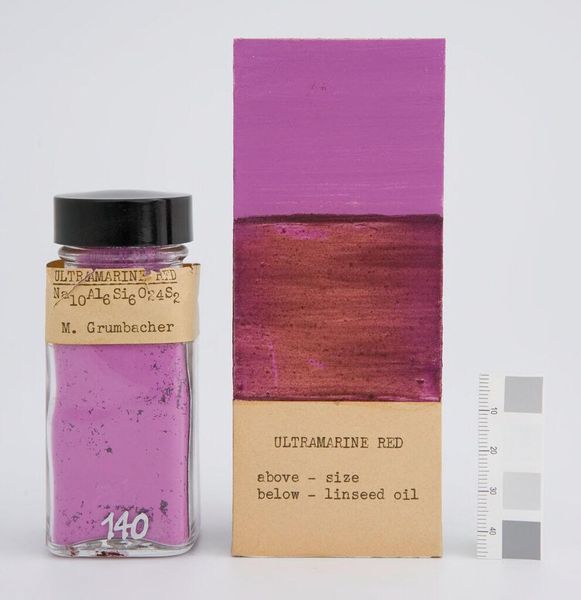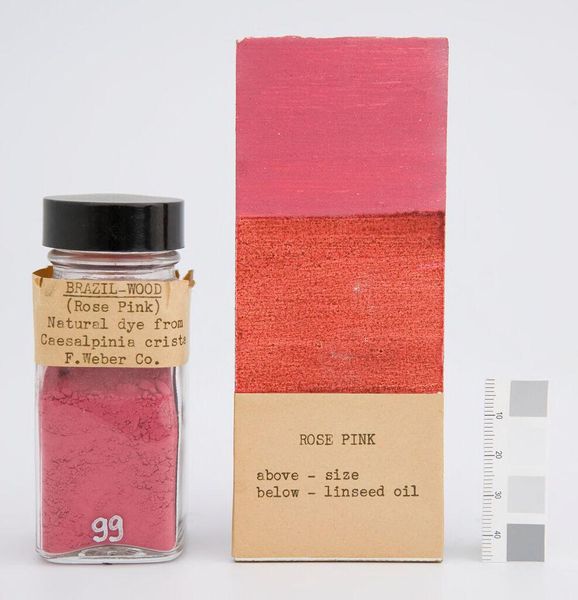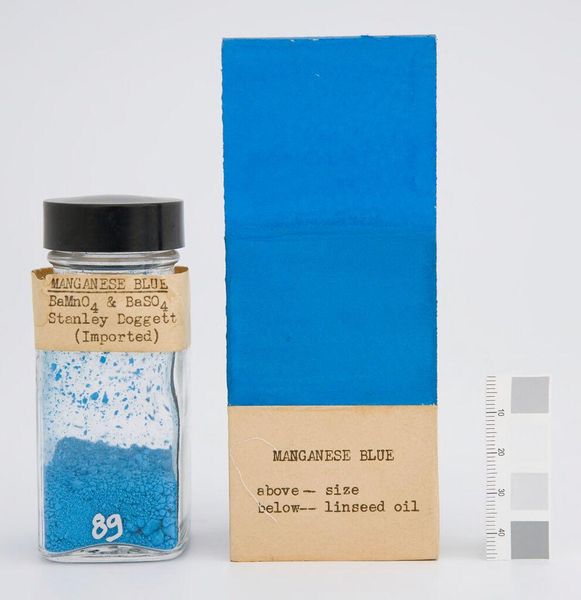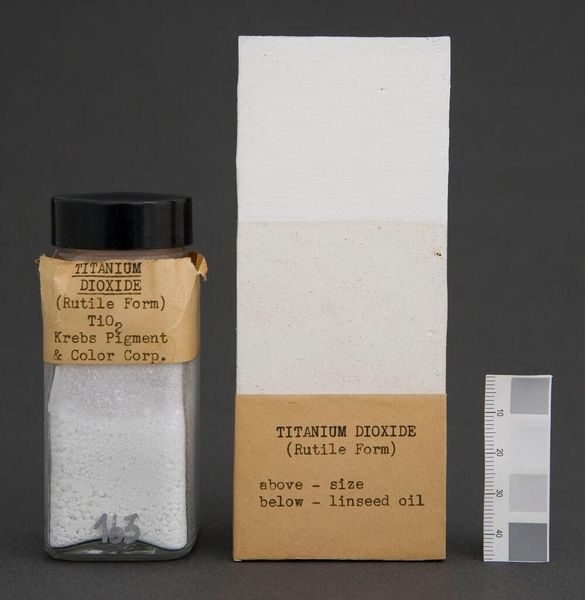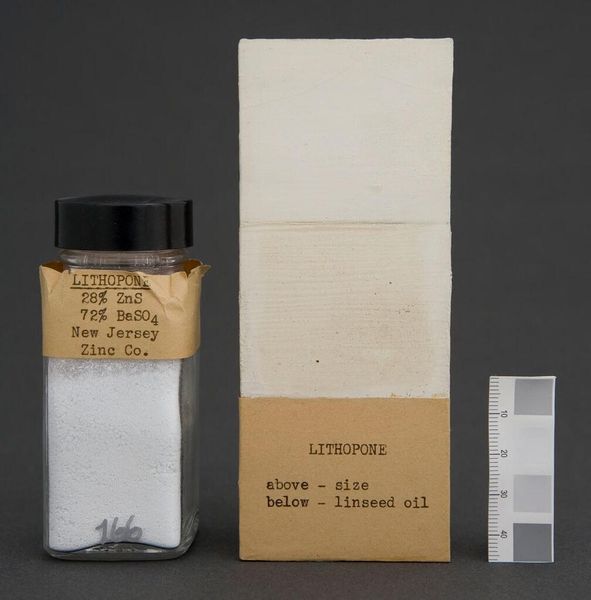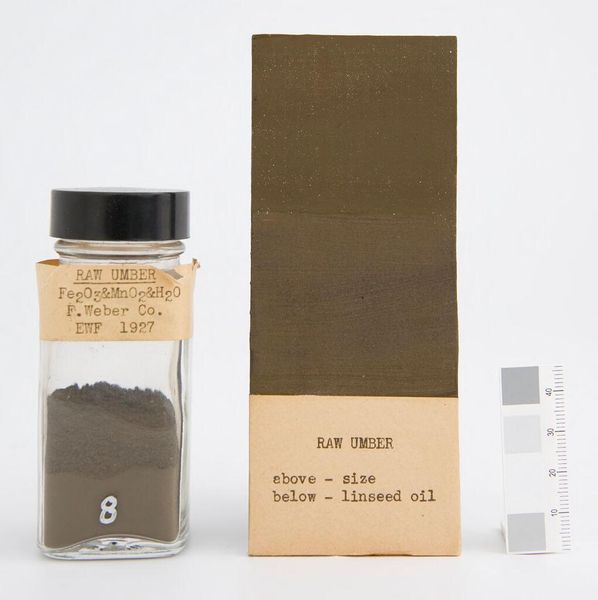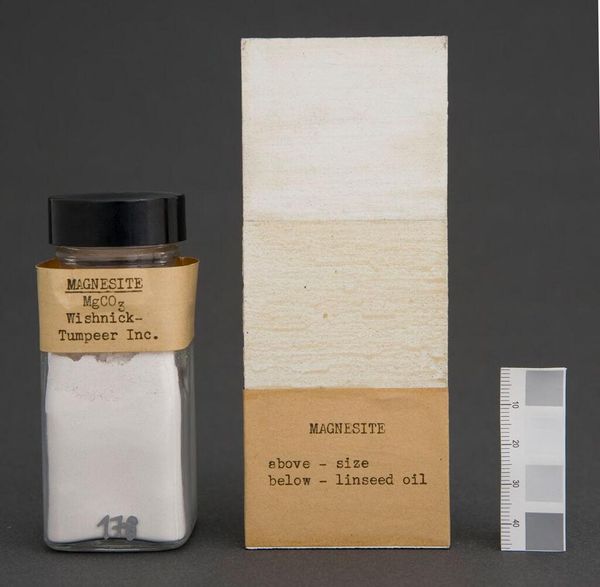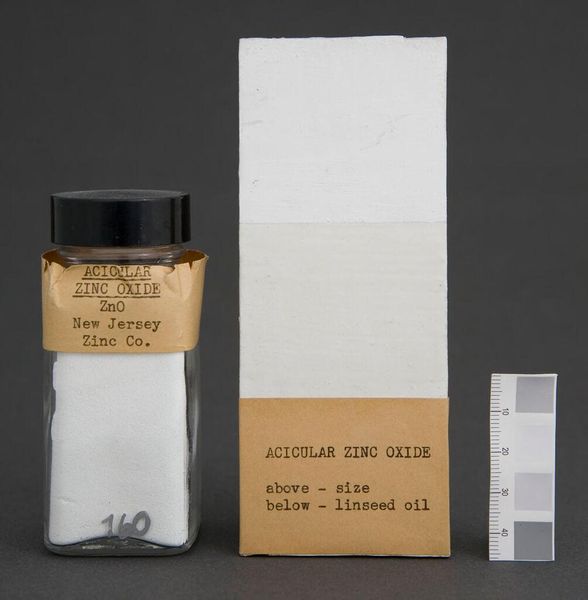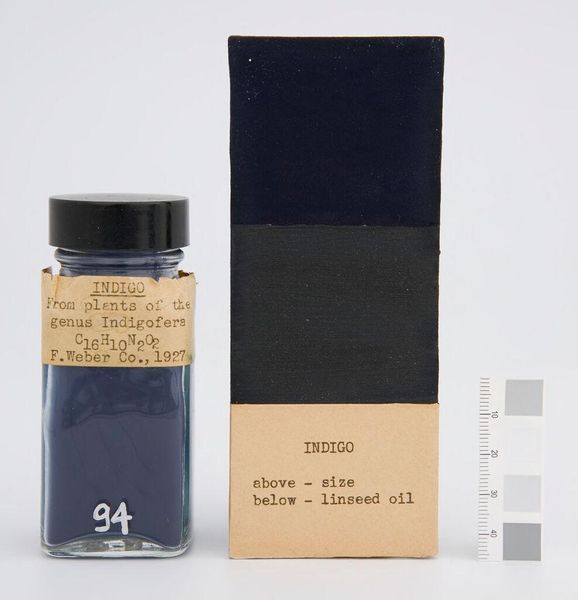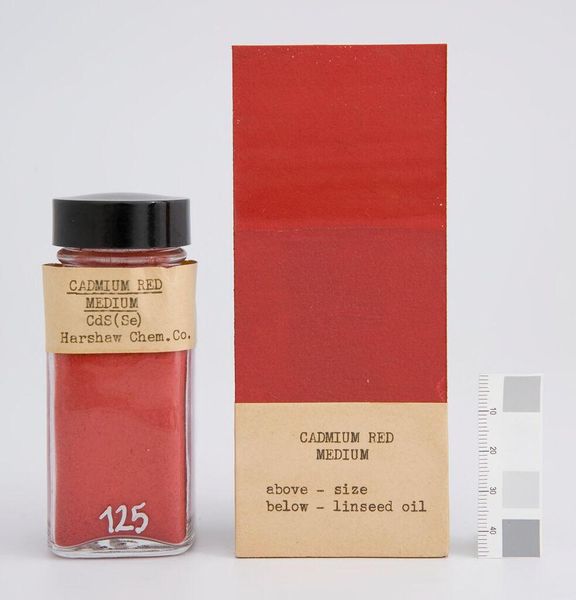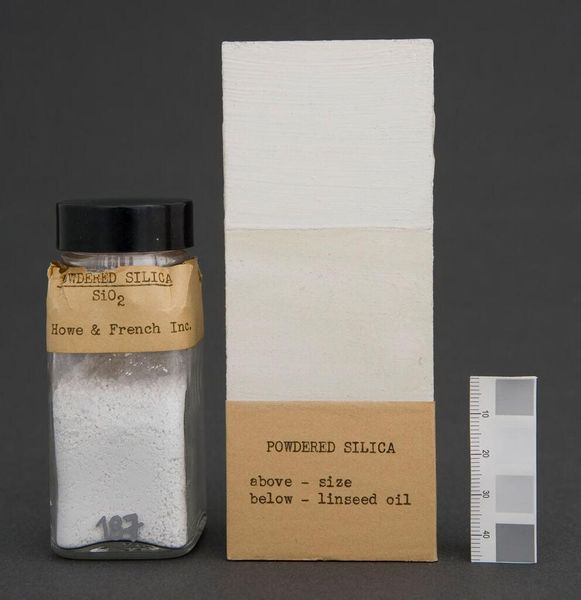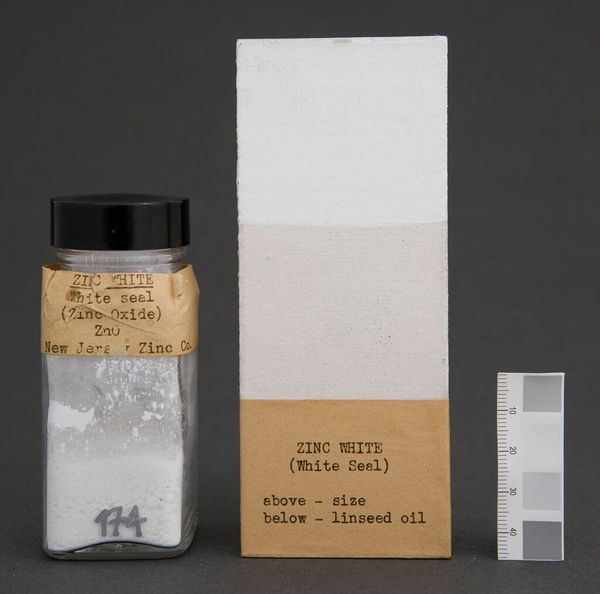
Copyright: CC0 1.0
Editor: Here we have Manganese Violet by F. Weber & Company. It's undated, but the bottle says "Weber 1927," and it includes both the raw pigment and a painted sample. It's striking how the color shifts based on the binder. What can you tell me about this object? Curator: This object speaks volumes about the commercialization of art. Weber, a company, not an individual artist, is the creator. It highlights how industrial production impacts artistic practice, democratizing access to materials while simultaneously shaping aesthetic choices. Editor: Democratizing access, how so? Curator: The availability of standardized, commercially produced pigments meant artists were less reliant on making their own, or expensive suppliers. This affected who could afford to create art, and how artworks were valued. Editor: I never thought about it that way. It's interesting how something as simple as pigment reveals larger social and economic forces at play. Curator: Exactly. Even the color violet itself carries cultural baggage. Editor: I’ll remember that next time I think about art supplies. Thanks!
Comments
No comments
Be the first to comment and join the conversation on the ultimate creative platform.
